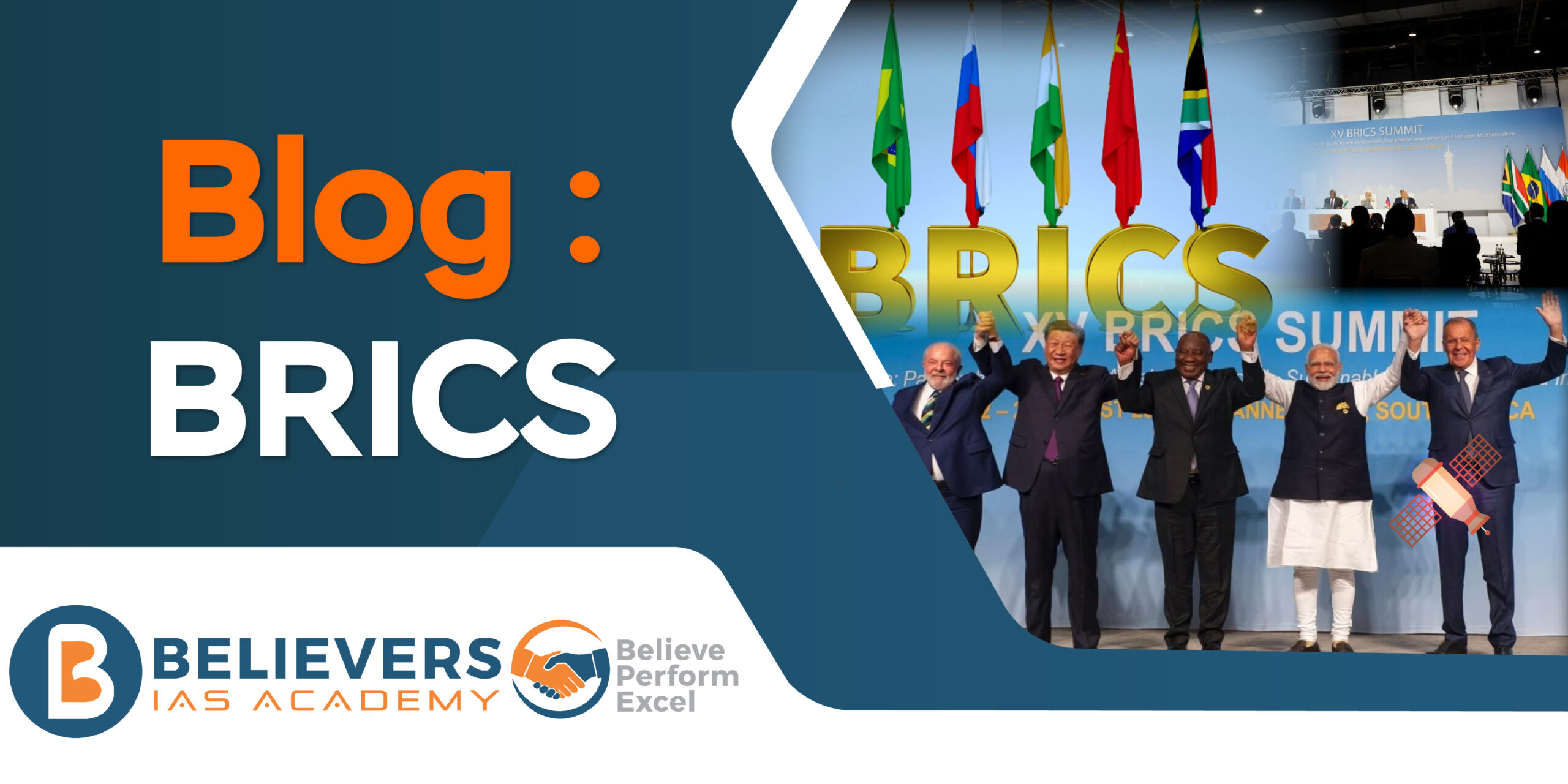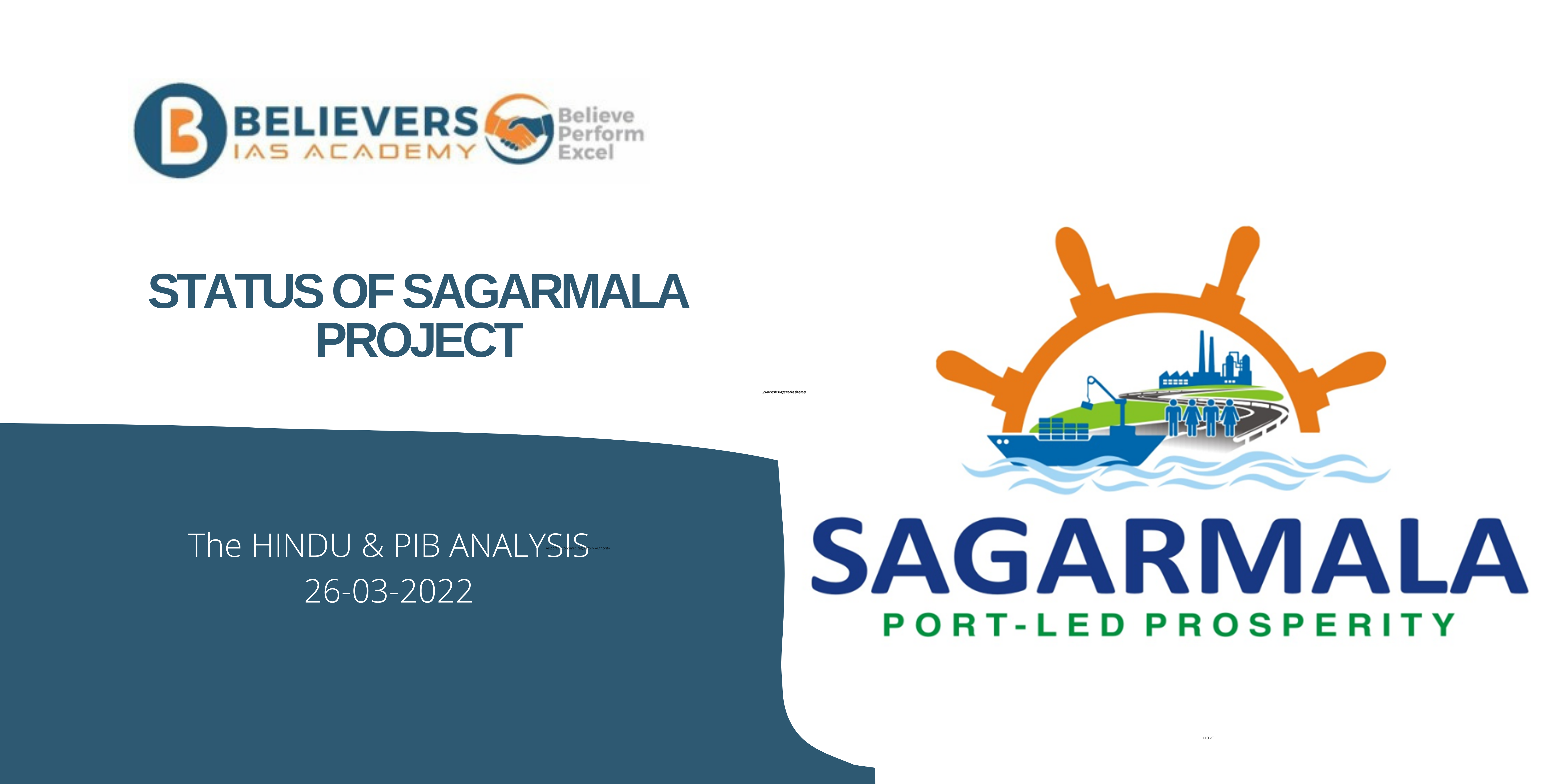BRICS
BRICS is a grouping of five major emerging economies: Brazil, Russia, India, China, and South Africa Jim O’Neill, a Goldman Sachs economist, first used the term “BRIC” in 2001 to refer to these four rapidly expanding economies that were expected to have a big impact on the world economy. After South Africa received an invitation to join in 2010, the acronym was changed to BRICS to reflect the inclusion of the other four nations.
Although the BRICS countries come from a variety of geographical places, they are united by their enormous populations, sizable landmasses, and quickly expanding economies. These countries are frequently viewed as emerging powers with the ability to alter the political and economic climate of the world.
What is the structure of BRICS?
High-level political and economic collaboration amongst its member nations is at the heart of the BRICS organization. The BRICS operate through several meetings, summits, and institutional arrangements even though they are not a formal intergovernmental body like the United Nations or the European Union. The BRICS structure’s essential elements are listed as follows:
- Summits: The leaders of the BRICS member nations meet in yearly summits to discuss a range of topics of interest. These summits offer a forum for conversation and collaboration on issues including economic growth, global governance, and geopolitical worries.
- Troika System: The current summit host nation, the prior host nation, and the forthcoming summit host nation make up a troika that directs the organization’s operations. The summit is planned and presided over by the host nation, and the troika oversees inter-summit communication and coordination.
- Ministerial Meetings: In addition to the annual summit of presidents, the BRICS member nations hold several ministerial gatherings all year long. These gatherings promote cooperation in a variety of fields, such as international affairs, finance, trade, and health.
- Working Groups and Tracks: To address particular challenges, BRICS has set up working groups and tracks. These organizations concentrate on issues related to the economy, banking, anti-terrorism, and science and technology. To accomplish particular objectives, they cooperate, conduct research, and have talks.
What is the historical background of the BRICS?
- The name “BRIC” was first used by Goldman Sachs economist Jim O’Neill in 2001, and the abbreviation BRICS stands for Brazil, Russia, India, China, and South Africa. The four rapidly expanding economies—Brazil, Russia, India, and China—that were anticipated to have a big impact on the world economy were given this moniker. When the foreign ministers of these nations met during the UN General Assembly in 2006, this marked the beginning of their interactions.
- The first official BRIC summit, which focused on the state of the world economy and the reform of financial institutions, was held in Russia in 2009. In 2010, South Africa officially joined the group after expressing interest in doing so, changing the abbreviation from BRICS to BRICS. To promote financial cooperation and stability among member countries, the BRICS signed agreements in the years that followed establishing the New Development Bank and the Contingent Reserve Arrangement in 2014. The reserve arrangement helps with liquidity, whereas the bank largely promotes infrastructure projects.
- At the 15th BRICS Summit in 2023, the group asked Argentina, Egypt, Ethiopia, Iran, Saudi Arabia, and the United Arab Emirates to join, with membership taking effect in 2024. The group’s scope was broadened to include political discussions. The BRICS countries are still dedicated to fostering collaboration, boosting their group influence, and promoting a more multipolar international system.
What are the objectives of the BRICS?
The primary goals of the BRICS (Brazil, Russia, India, China, and South Africa) group are to work together and cooperatively to address numerous economic, political, and global concerns. The main goals are as follows:
- Economic Development and Growth: The BRICS nations seek to promote economic development, growth, and collaboration among one another. To promote innovation, investment, trade, and sustainable development, they aim to maximize their combined economic potential.
- Global Financial Stability: To improve global financial stability, BRICS countries formed the Contingent Reserve Arrangement (CRA) and the New Development Bank (NDB). While the CRA offers protection from balance of payments difficulties, the NDB offers finance for infrastructure projects.
- Multipolarity and Global Governance Reform: BRICS calls for the reform of global governance organizations including the United Nations, International Monetary Fund (IMF), and World Bank to better reflect the evolving nature of the world.
- Geopolitical Coordination: BRICS has widened its initial focus on economics to include geopolitical issues. Member nations debate international political issues, support non-interference in domestic affairs, and push for peaceful conflict resolution.
- Promotion of South-South Cooperation: South-South cooperation is promoted by BRICS, which places a strong emphasis on cooperation between emerging nations, also known as South-South cooperation. To improve development outcomes, this entails best practice sharing, technology transfer, and capacity building.
- Alternative Financial efforts: To lessen reliance on conventional, Western-dominated financial institutions and systems, BRICS has proposed efforts like the NDB, and CRA, and debates on alternative payment methods.
- Innovation and Technology: To increase their competitiveness and address shared difficulties in sectors like healthcare, agriculture, and energy, the member nations work together on innovation, research, and technology development.
- Human Development and Social Inclusion: By exchanging knowledge and best practices among its members, the BRICS aims to raise human development indicators, such as those related to healthcare, education, and poverty eradication.
- Climate Change and Sustainable Development: The BRICS nations cooperate to address environmental issues, such as climate change and sustainable development, by fostering renewable energy, environmental preservation, and ethical resource management.
What is the New Development Bank?
NDB is an abbreviation for New Development Bank. The BRICS nations (Brazil, Russia, India, China, and South Africa) formed this international development bank to support infrastructure and sustainable development initiatives in developing and rising economies. The NDB was established as an alternative to already-existing international financial institutions with the mission of fostering economic growth, reducing infrastructure deficits, and fostering member-country collaboration.
The New Development Bank’s (NDB) salient characteristics are:
- Purpose: The NDB’s main goal is to finance numerous infrastructure initiatives in the areas of transportation, energy, water, and urban development. These initiatives support employment creation, economic expansion, and overall sustainable development.
- Cooperative Ownership: All of the BRICS countries that make up the NDB’s membership are equally responsible for the bank’s ownership and decision-making.
- Financial Support: The NDB is financed by capital contributions from its member nations and global financial markets. It offers loans and financial support to both members and non-member nations for projects that qualify.
- Project Financing: The NDB supports initiatives that encourage social inclusion, environmental standards, and sustainable development goals. Positive effects on the economy, society, and environment are anticipated from projects.
- Governance: Management, a Board of Directors, and a Board of Governors make up the NDB’s governing structure. Consensus among member nations serves as the foundation for decision-making procedures.
- operations: The bank carries out its activities by lending money to members and non-member nations for projects that have been approved. Additionally, it provides sharing of information and technical assistance to guarantee the smooth completion of projects.
- concentration on rising Economies: The NDB is open to finance initiatives in other developing and rising economies around the world, however, its major concentration is on financing BRICS projects.
What is Contingent Reserve Arrangement?
CRA stands for the Contingent Reserve Arrangement. It is a financial arrangement established by the BRICS countries (Brazil, Russia, India, China, and South Africa) to provide a safety net against balance of payments difficulties and external financial pressures. The CRA is designed to enhance the financial stability of its member countries and provide a collective mechanism to address potential short-term liquidity challenges.
Key Features :
- Support for Liquidity: The CRA is designed to give member nations access to more money when they need it. A member nation may ask the CRA for financial assistance if it experiences balance of payments issues.
- Member Contributions: According to specified quotas, member nations contribute to the CRA’s resources. The quantity of financial support any member may perhaps receive is based on their contributions.
- System of Quotas: Each member’s quota is based on its economic potential and size. The total amount of quotas determines the CRA’s financial resources.
- loan Mechanism: The CRA uses a loan mechanism to offer financial assistance. Both a precautionary line and a short-term liquidity line are available to member countries as resources. The borrowing member and the CRA agree on the terms and conditions.
- Multilateral Cooperation: The CRA encourages collaboration between the BRICS nations by providing financial support when required. The member nations’ resistance to pressure and shock from the outside is improved by this cooperative process.
- Crisis avoidance: The CRA aims to avoid financial crises by giving member nations prompt liquidity support, thereby reducing the potential negative effects of outside economic shocks.
- Complementing Current Arrangements: The International Monetary Fund (IMF) and other current international financial arrangements are expected to be supplemented by the CRA.
- Government and Decision-Making: The CRA has a Governing Council and a Standing Committee, and its decision-making procedures are based on agreement among its member nations.




